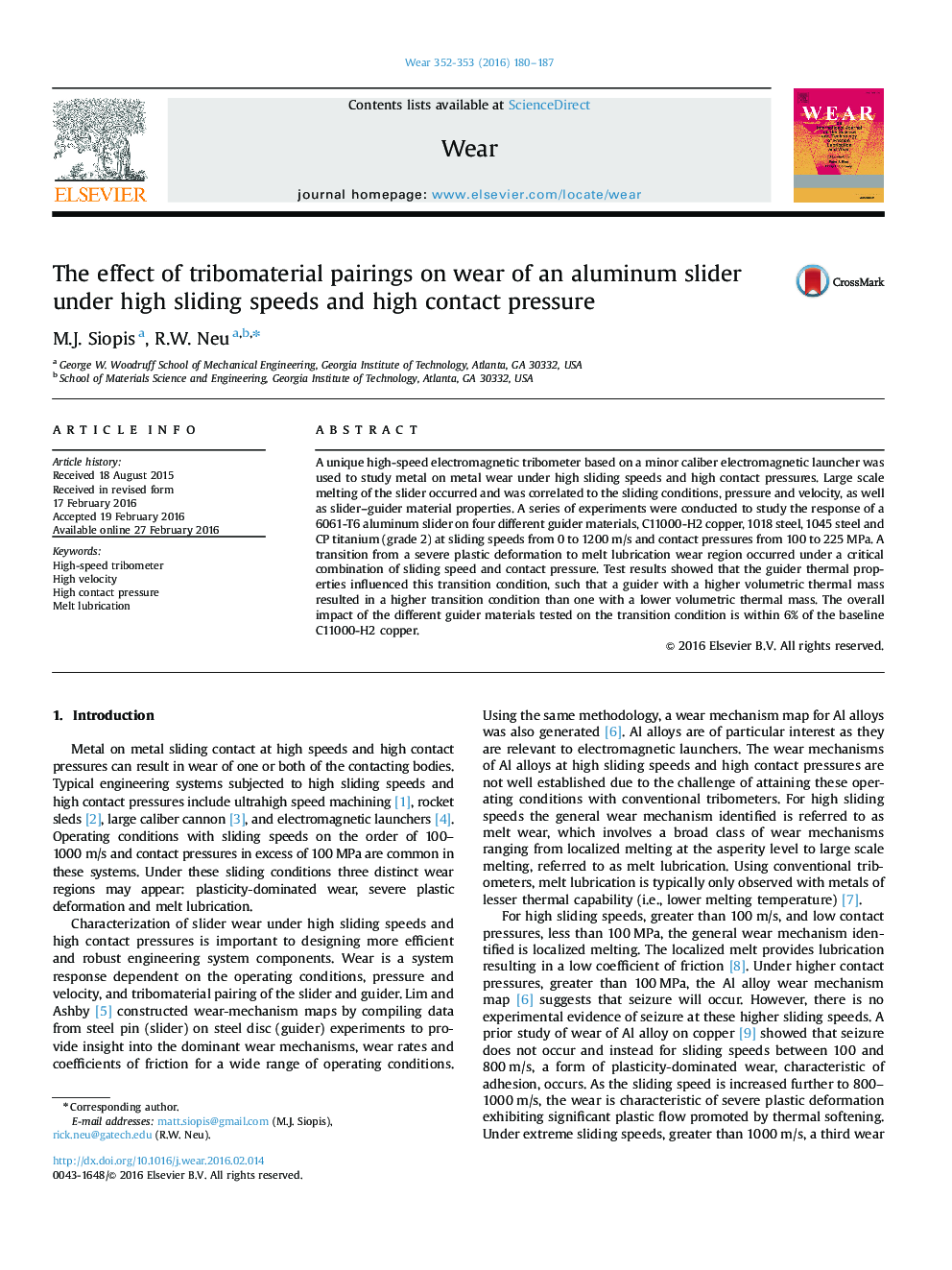| Article ID | Journal | Published Year | Pages | File Type |
|---|---|---|---|---|
| 616923 | Wear | 2016 | 8 Pages |
•A unique high speed electromagnetic tribometer has been implemented.•The influence of extreme sliding speeds and pressures is studied.•The conditions for transition to melt lubrication wear have been identified.•The thermal properties of the guider material influence this transition.
A unique high-speed electromagnetic tribometer based on a minor caliber electromagnetic launcher was used to study metal on metal wear under high sliding speeds and high contact pressures. Large scale melting of the slider occurred and was correlated to the sliding conditions, pressure and velocity, as well as slider–guider material properties. A series of experiments were conducted to study the response of a 6061-T6 aluminum slider on four different guider materials, C11000-H2 copper, 1018 steel, 1045 steel and CP titanium (grade 2) at sliding speeds from 0 to 1200 m/s and contact pressures from 100 to 225 MPa. A transition from a severe plastic deformation to melt lubrication wear region occurred under a critical combination of sliding speed and contact pressure. Test results showed that the guider thermal properties influenced this transition condition, such that a guider with a higher volumetric thermal mass resulted in a higher transition condition than one with a lower volumetric thermal mass. The overall impact of the different guider materials tested on the transition condition is within 6% of the baseline C11000-H2 copper.
